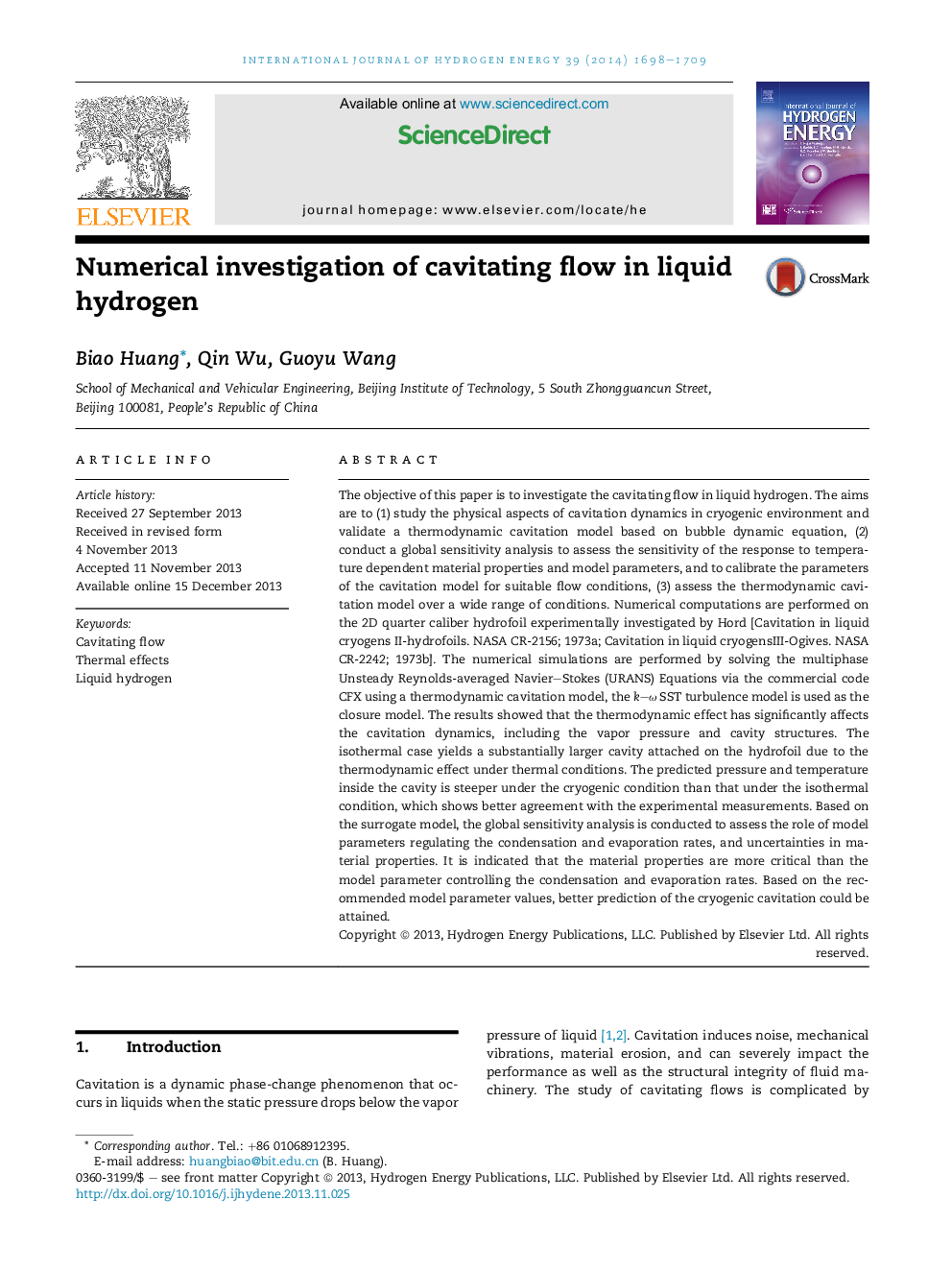| کد مقاله | کد نشریه | سال انتشار | مقاله انگلیسی | نسخه تمام متن |
|---|---|---|---|---|
| 7720773 | 1497505 | 2014 | 12 صفحه PDF | دانلود رایگان |
عنوان انگلیسی مقاله ISI
Numerical investigation of cavitating flow in liquid hydrogen
ترجمه فارسی عنوان
بررسی عددی جریان حفره در هیدروژن مایع
دانلود مقاله + سفارش ترجمه
دانلود مقاله ISI انگلیسی
رایگان برای ایرانیان
کلمات کلیدی
جریان حفره، اثرات حرارتی، هیدروژن مایع
موضوعات مرتبط
مهندسی و علوم پایه
شیمی
الکتروشیمی
چکیده انگلیسی
The objective of this paper is to investigate the cavitating flow in liquid hydrogen. The aims are to (1) study the physical aspects of cavitation dynamics in cryogenic environment and validate a thermodynamic cavitation model based on bubble dynamic equation, (2) conduct a global sensitivity analysis to assess the sensitivity of the response to temperature dependent material properties and model parameters, and to calibrate the parameters of the cavitation model for suitable flow conditions, (3) assess the thermodynamic cavitation model over a wide range of conditions. Numerical computations are performed on the 2D quarter caliber hydrofoil experimentally investigated by Hord [Cavitation in liquid cryogens II-hydrofoils. NASA CR-2156; 1973a; Cavitation in liquid cryogensIII-Ogives. NASA CR-2242; 1973b]. The numerical simulations are performed by solving the multiphase Unsteady Reynolds-averaged Navier-Stokes (URANS) Equations via the commercial code CFX using a thermodynamic cavitation model, the k-Ï SST turbulence model is used as the closure model. The results showed that the thermodynamic effect has significantly affects the cavitation dynamics, including the vapor pressure and cavity structures. The isothermal case yields a substantially larger cavity attached on the hydrofoil due to the thermodynamic effect under thermal conditions. The predicted pressure and temperature inside the cavity is steeper under the cryogenic condition than that under the isothermal condition, which shows better agreement with the experimental measurements. Based on the surrogate model, the global sensitivity analysis is conducted to assess the role of model parameters regulating the condensation and evaporation rates, and uncertainties in material properties. It is indicated that the material properties are more critical than the model parameter controlling the condensation and evaporation rates. Based on the recommended model parameter values, better prediction of the cryogenic cavitation could be attained.
ناشر
Database: Elsevier - ScienceDirect (ساینس دایرکت)
Journal: International Journal of Hydrogen Energy - Volume 39, Issue 4, 22 January 2014, Pages 1698-1709
Journal: International Journal of Hydrogen Energy - Volume 39, Issue 4, 22 January 2014, Pages 1698-1709
نویسندگان
Biao Huang, Qin Wu, Guoyu Wang,
